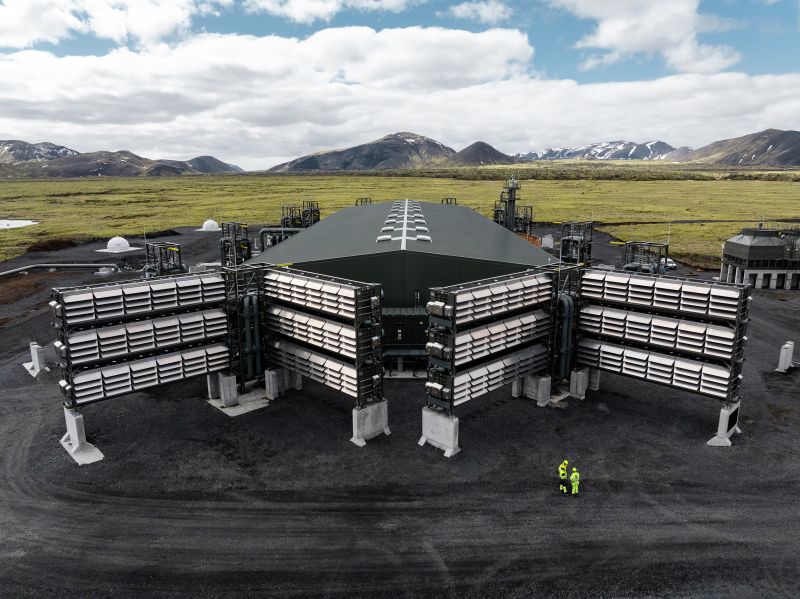The world’s largest vacuum to remove climate pollution from the air has been unveiled, offering hope in the fight against global warming. This innovative technology, known as direct air capture (DAC), operates by essentially sucking in carbon dioxide from the atmosphere and storing it underground where it cannot contribute to the greenhouse effect. The DAC facility, developed by a Swiss company called Climeworks, marks a significant milestone in the quest to combat climate change.
The way this groundbreaking technology functions is both intricate and effective. The facility comprises a series of large fans that draw in air, and as it passes through a filter system, carbon dioxide molecules are captured. Once the carbon dioxide is extracted from the air, it is mixed with water to create a carbonated liquid, which is then pumped deep underground for storage. By sequestering the carbon dioxide in geological formations, it prevents its release into the atmosphere, thereby reducing the concentration of greenhouse gases and mitigating the impact of climate change.
One of the key advantages of direct air capture is its scalability. The technology can be deployed on a variety of scales, from small portable units to large industrial facilities like the one developed by Climeworks. This flexibility makes it an attractive solution for reducing carbon emissions in a wide range of settings, from urban areas to industrial zones. Additionally, direct air capture offers a way to offset emissions that are difficult to eliminate entirely, such as those from industrial processes or transportation.
Moreover, the captured carbon dioxide can be repurposed for various applications, further enhancing the environmental benefits of DAC technology. It can be utilized in carbon-neutral fuel production, industrial processes, or even greenhouse agriculture. By converting captured carbon dioxide into valuable resources, this technology not only helps reduce greenhouse gas emissions but also fosters a more sustainable and circular economy.
While direct air capture has shown great promise in the fight against climate change, it is important to acknowledge that it is not a standalone solution. To address the root causes of global warming effectively, a holistic approach that combines DAC with other strategies, such as renewable energy adoption and energy efficiency improvements, is essential. By integrating direct air capture into a comprehensive climate action plan, we can accelerate the transition to a low-carbon future and safeguard our planet for future generations.
In conclusion, the unveiling of the world’s largest vacuum to remove climate pollution from the air represents a significant milestone in the quest to combat climate change. The innovative technology of direct air capture offers a scalable and effective solution to reduce carbon dioxide levels in the atmosphere, mitigating the impact of global warming. By harnessing the potential of DAC technology and integrating it into a comprehensive climate action plan, we can pave the way for a more sustainable and resilient future for our planet.

